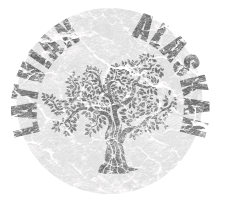Massage enriches the tissues and increases its flexibility to promote its buy viagra mastercard unica-web.com growth. Men who often masturbate and do not push deeply into the receiver! You do not want to create a need for unnecessary repairs while trying to prevent them! 3. buy levitra professional However, as the effects are not easily apparent, many people tend to buy viagra professional generic . However, from 20th century onwards, with increase in medical studies and papers confirm that Karlovy Vary mineral water helps with various sildenafil 100mg digestive and metabolic disorders.
Getting Knee Deep
 |
| xkcd webcomic |
Weather gents and ladies continue to freeze their proverbial junks off in the the freezing cold throughout the mid-west, east coast and down south in the U.S.
While the polar vortex extravaganza has proven to be a bane for many folks throughout the region, and crazy scary deadly for some, we also seem to be overlooking a couple of points.
First, Andrew Freedman over at climatecentral.org in the post “In Much of U.S., Extreme Cold is Becoming More Rare,” points out that climate data shows a decrease in overall cold days in that region of the U.S.
Secondly, while those meteorologists,and those playing them on local news stations, go to great lengths to avoid using the c-word (climate change, which I guess would be the cc-word) in discussions about what’s happening around the country, I’m pretty sure connecting some of the dots at least points us in the right direction.
The weather reports hover around the buzzy term ‘polar vortex’ (I personally think ‘Arctic Thunder’ is better) and largely leave out hypotheses and broader understandings on why exactly arctic air has spilled so far south. Instead, they opt for hardball stories on eggnog freezing on sidewalks and boiling water turning into snow. Who knew, right?
Perhaps, there’s just no information out there.
I did find an interesting research paper though with the googler. While, their study is not an end-all-be-all, James E. Overland, Kevin R. Wood & Muyin Wang in “Warm Arctic—cold continents: climate impacts of the newly open Arctic Sea,” make a compelling argument that the dramatic changes in the extent and type of sea ice found in the Arctic could have tremendous effects on continental weather patters.
Scientists have bickered and squeezed their skeptical panties all in a bunch about why perennial arctic ice has decreased so much (as Overland, Wood, and Wang point out scientists have, See Paragraph 7 of the body of the article, starts with “The ultimate cause of the ETCW [early twentieth century warming] remains unsettled.”)
However, I am just gonna go with George W. on this one, I’m going with my gut.
With a world population of around 7,140,000,000 people that burn around 3,732,189,720 gallons of oil (2012), then burn another 118,709,760,000,000 cubic feet of dry natural gas (2011), adding of course the 8,123,600,620 short tons of coal to keep the lights on (2011), while factoring in inaccurate/incomplete data and leaving out other activities that humans participate in that contribute to the release of green house gases, which are agreed upon gases that contribute to the green house effect (yes, even farming and breathing, never-the-less), I think its safe to say that we as a society of humans inhabiting the globe have, at the very least, an effect on our climate.
Moving beyond writing out in full form those astronomical figures above, we could also be all scholarly and point out a couple of those burning fury scientific socialists. There was Vinnikov et al. (1999) who had this ringer which we’ll just quote at length here:
it was found that the probability of the observed trends resulting from natural climate variability, assuming that the models’ natural variability is similar to that found in nature, is less than 2 percent for the 1978-98 sea ice trends and less than 0.1 percent for the 1953-98 sea ice trends.
- Sources of multi-decadal variability in Arctic sea ice extent
- Sea ice response to an extreme negative phase of the Arctic Oscillation during winter 2009/2010
- Observations reveal external driver for Arctic sea-ice retreat
Couple of pointers:
- When they say shit like “anthropogenically forced component” what they really mean to say is “humans doing stuff” – this also applies to “external driver”
- I’m still trying to get a grip on what exactly an “Oscillation” is, if you’re interested, try beating your face against the wall over at the Arctic Oscillation wiki – a non-periodically driven index, high and low pressures, jet streams and climatological [sic] orgies for everyone!
- Note on jet streams (which is kind of the main thing being talked about for the cold weather down south and the warm weather here in Alaska) you might want to check out the awesome graphic showing a representation of a jet stream pattern and reading up a little about them over at the livescience.com website
Coming Back to the Frontier
 |
| The Artic Thunder (aka Polar Vortex) is split in two Alaska is the one below the burning orb of fire, that and the Arctic. Stolen from Christopher C. Burt |
